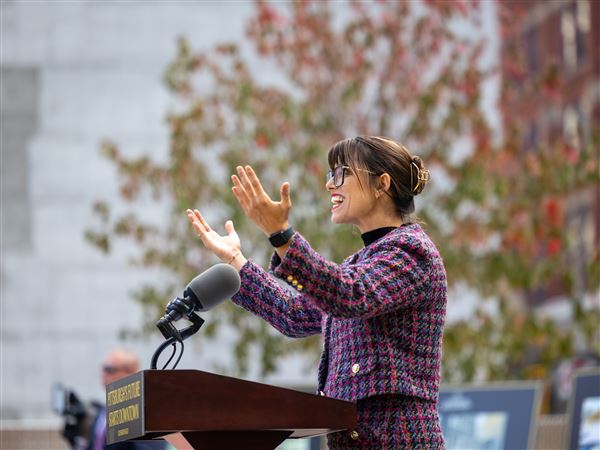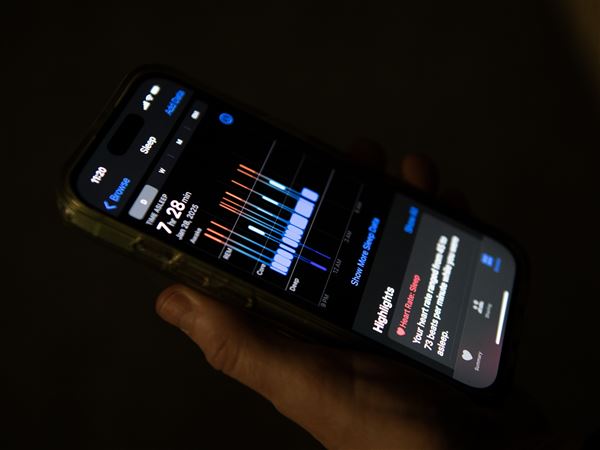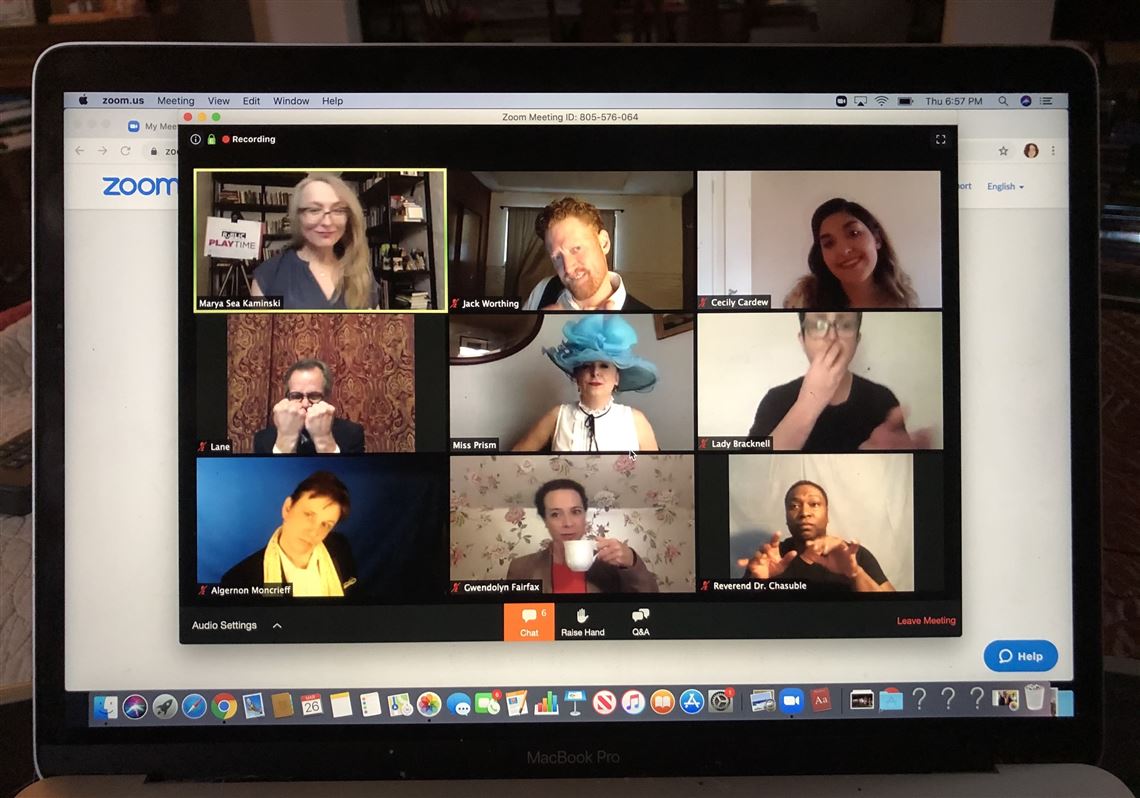Zoom is the live video-conferencing choice of millions in these days of physical distancing and online social connection. But you probably knew that.
If 2020 has a theme song that is not virus-related, it might well be “Who’s Zoomin Who?” And for its catchphrase, you can’t go wrong with, “Can you hear me?” — followed by someone mouthing the words, “Unmute yourself!”
When “Saturday Night Live” returned to the “Live” part of its title this month, a sketch about a company’s first Zoom meeting and two discombobulated employees was a source of hilarity and a lot of nodding in agreement.
Zoom has launched millions of perfectly fine connections and almost as many stories about meetings and family gatherings gone awry. One California farmer, realizing that household pets Zoom-bombing meetings are all the rage, is offering the chance to invite one of its animals to a Goat 2 Meeting — a corporate cameo appearance goes for $100.
Zoom isn’t the only video-conferencing platform in town, but it has won fans by working across numerous devices and systems and allowing up to 100 participants and 40 minutes at no cost. Paid options can bring that number up to 500 participants.
Despite privacy concerns and incidents of hacking, the platform had nearly 13 million monthly active users in late February, an uptick of 21% since the end of 2019.
Aaron Caldwell is the video systems technician at Carnegie Mellon’s Institute for Software Research, a department within the School of Computer Science. His job, before all classes moved online, was on-campus course capture and technical support for Zoom classes and an intraschool private platform.
These days, it’s almost all Zoom, all the time, even at home.
“We did an Easter Zoom call and tried to get my 99-year-old grandmother involved,” he said. “No one could quite figure out how to get the audio connected and she didn’t really understand what was going on, so she was just sitting there waving.”
Andrew Conte, head of Point Park University’s Center for Media Innovation, was using Zoom for more than a year before the COVID-19 outbreak made it the way of the world. Now he’s using it to record “Our Region’s Business,” the Allegheny Conference show seen on WPXI.
“The conference came to us when WPXI shut down their studios and said, could we record the segment in our studio ... but then we shut down. So we do the whole show remotely via Zoom,” he said.
Mr. Conte and Mr. Caldwell cite the ease of the platform — set up a meeting, get a URL and ID to join, perhaps a password and a host as well — and you’re good to go.
The only issue Mr. Conte and his team faced has been recording at midday, so the shoot time for the show was changed to 9 a.m.
“We were experiencing across-the-board poor Internet quality,” he said. “That would mean like buffering issues, where the video wasn’t catching up to the audio and just general grainier video.”
At home, he has had one experience with a relative who has had trouble adapting.
“The only one has been my wife’s aunt,” Mr. Conte said. “I was trying to walk her through it after she downloaded the software. So we tried to do a meeting and she totally disappeared. We never did figure it out.”
Pittsburgh Public Theater was one of the first local entertainment groups to go online with a Zoom performance. Its PlayTime series on Thursdays and Fridays has already offered three full-length play readings, with the host using the agility of the system to suppress those people who aren’t in a particular scene and to mute input from viewers.
Zoom in the classroom has all sorts of possibilities, including a class of teens who “passed” a pencil from student to student, confusing their teacher but showing initiative just the same.
Zoom alternatives
Zoom is the platform used across CMU’s campus now, but it used to be BlueJeans, which like Zoom works across many systems and devices. BlueJeans was among the top 10 video-conferencing platforms of 2020 chosen by PC Magazine, which included Zoom and Microsoft Teams, the latter a free app that was designed with business meetings in mind.
Mr. Caldwell said that his personal video conferencing choice is Google Duo, which also works across devices. Despite the “Duo” in the name, you can create a group of up to 12 people. The app is free, and similar in practice to Apple's FaceTime, Facebook's WhatsApp and Microsoft's Skype.
Duo differs from the better-known Google Hangouts in that it was created more for one-on-one or intimate groups. In Hangouts, video calls can have up to 25 participants.
If everyone in a group has an Apple device, FaceTime allows up to 32 participants, including the caller. Skype has premium options that require payment for multiple video users, and WhatsApp has a video call feature for up to four users at a time.
Having a party
The choices for game nights, watch parties and parties in general are multiplying as fast as online content.
• Kast: Share movies, TV shows and games with 100+ people with the app that also allows you to broadcast and upload original content.
• Netflix Party: This Google Chrome extension has to be available to the person inviting fellow Netflix users to the party. The “NP” icon should then be on his or her Netflix address bar and turn red when a show or movie has begun. Click on the icon, and follow instructions to “Start the party.”
• TwoSeven: The Verge website lists a handful of apps similar to Kast and Netflix Party, including TwoSeven, which allows users to watch YouTube, Amazon Prime Video or HBO Now while video chatting with an unlimited number of partygoers.
• Houseparty: The social networking and gamers’ app allows up to eight people to video chat at once in a “room,” while moving between multiple rooms at once. Users receive a notification when friends open the app and can join chats in progress.
• Twitch: The current home of Arcade Comedy’s “Knights of the Arcade” is the leading platform for gamers, but it has other applications. Communities and channels can be created to build audiences and "to chat, interact and [for users to] make their own entertainment together.”
What the new pros are using
Some livestream apps come with bells and whistles to incorporate graphics, donation links and commenting. A couple you may have already tuned into are StreamYard and BeLive.
StreamYard is a livestream service that was created to be “a studio in your browser,” where you can “interview guests, share your screen, and much more.” Webcasts may be streamed directly to Facebook, YouTube and other distribution platforms.
StreamYard is the choice, for example for “Stars in the House,” the twice-daily variety show hosted by Seth Rudetsky and James Wesley. It features Broadway stars, TV reunion shows (“Frasier”; “Taxi”) and to raise money for The Actors Fund.
There is a limit to six people in the stream and up to 10 in the “studio” to be swapped in and out. That can have consequences, making for moments fit for a “Saturday Night Live” sketch.
During a “Glee” reunion, for example, Matthew Morrison was singing “Somewhere Over the Rainbow,” accompanying himself on ukulele. He suddenly disappeared from the screen, while other cast members reappeared. Luckily, one still there was Darren Criss, guitar in hand, who picked up the song.
“I can't give an exact number, but I know tens of thousands of people are broadcasting with StreamYard every week,” Dana Bentz, the company’s head of business development, said via email. “The usage of platforms like Facebook Live and YouTube Live have gone up significantly, up to 50% in some cases, and StreamYard’s usage and growth has followed that.”
BeLive, which recently boasted nearly 488,000 streams created, is the choice of Alone/Together/Pittsburgh, which came online almost from the very start of social distancing mandates.
The local webcast has gone through several incarnations and many technical glitches — “So many,” said Patrick Jordan, the Alone/Together host.
During one show, guest Michael Cerveris’ songs were interrupted with buffering and another guest came on without sound. “Can you hear me?” is something he says can hear in his sleep these days.
“When we glitch,”Mr. Jordan said, “we go big!”
Sharon Eberson: seberson@post-gazette.com or 412-263-1960. Twitter: @SEberson_pg
First Published: May 1, 2020, 10:57 a.m.

















